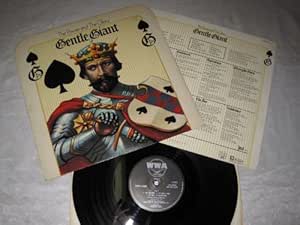Wow. I remember a time, not so very long ago, when the compact disc was relatively new, and my friend and I eagerly scoured the various trade magazines, and record store bins, hoping to find our favorite 70's prog albums on cd. No pops, no crackles, no surface noise, no tracking distortion.
Of course, some sounded amazing. The ones lucky or studious enough to track down the proper, first-generation, non-vinyl masters, sounded wonderful. An enormous improvement on the old records. Far too many however, were simply old, 2nd or 3rd (or even 4th), generation production masters, with compression and equalization intended for vinyl. Regardless of what the angry, old, hippies tell you, vinyl is an extremely limited and comparatively primitive medium, and it requires an enormous amount of eq'ing in order to even vaguely resemble the original master tape. Treble especially is boosted, which explains why so many of the early cd releases of back catalogue titles sounded harsh and unnatural. Many have mistakenly made this an "analogue vs. digital" debate, which is really inaccurate. Any recording engineer will tell you that analogue is fine. You'll never hear a better source of reproduction than a pro-level analogue tape machine. However, a piece of vinyl being read by a needle is not the same thing as a studer 1" mastering deck.
I know, all this sounds off-point, but the reason for the quick primer in mastering is to give some understanding of why these Steven Wilson remixes are such a great thing. "Remasters", as anyone, regardless of technical acumen knows, are a spotty business. Many sound much better than previous releases, far too many sound little or no better, and a disturbing amount sound even worse.
In order to really understand why, you have to know a little about how albums were made in those days. An album was generally recorded on a 24 track tape machine. A large, 2-inch wide tape held 24 separate tracks of sound. Guitar on one, bass on another, singer on another, etc. When all the instruments were recorded and all the effects and balancing of sounds were complete, they had to be "mixed ". Since your stereo at home doesn't have 24 speakers to play all those tracks, they need to mix the 24 instrument tracks down to just the 2 your stereo can play. Left and right. That first "stereo" tape was the 1st generation master. It's the best sounding stereo source you can ever have, because it came straight from the original multi-track recordings. In order to keep this tape safe, it was generally the practice to make more copies from that copy. A vinyl master was a copy made from the original and then eq' and processed for pressing the records from. Typically, another copy was used to make cassettes from, etc. Often masters were lost or misplaced, and copies were made of the copies. With analogue, every time you make a copy of a copy, you add noise and lose quality. Which is why so many releases of classic albums sounded awful. They were only as good as the tape they were taken from, and as you can imagine, not a lot of effort was taken in the early days to track down the best tapes, with profit minded companies assuming no one would know the difference.
Well, finally getting to the point, these 5.1 releases are, or at least should be unless handled by complete idiots, the best sound physically possible, because unlike a "remaster", a legitimate 5.1 release requires going back to the original, multitrack tape. There is no better source than the big 2" tape the instruments were recorded directly to.
Well luckily for us, Mr. Wilson is certainly no idiot. He's a remarkable musician and engineer by any standard, and so far, I've enjoyed all of his releases. But this, to my ears is probably the finest -at least the basic sonics are. The sound quality is simply stunning. The fidelity is basically what you would be hearing if you were at the studio with Gentle Giant back in 75' listening to the playbacks. A prog fan and audiophile can hardly ask for more than that.
The blu-ray comes with both the 5.1 surround mix, as well as the 2-channel stereo mix for those who either don't have a surround setup, or simply don't care for such a radically different version of what they are used to hearing. There are really two schools of thought on surround mixes of music recordings. The first, and most often held by audiophiles, is that the rear channels should simply provide ambient information. Just the reflections and echoes that you would hear off the side and rear walls during a performance. This ideal assumes that the pinnacle of sound reproduction is to accurately reproduce a band's live performance. Any other use is considered gimmicky and unnatural.
The second view is basically.." Look sparky, I paid a lot for all these channels and speakers, and by gum I want to hear some stuff flying around the room." Which is fair enough I suppose. I tend to be a fan of the former generally, but I don't stick to it like dogma. It depends on the style and intentions of the artist. ELP and Pink Floyd tended to be very flamboyant with their sound, and even used their quad PA systems to quite intentionally "make stuff fly around the room." Other artists with more austere and naturalistic sound and style, probably would be better served with a less "showy" mix ( it's hard to imagine a Neil Young album sounding right with his guitar whizzing around the rear speakers).
Steven Wilson, as a long time prog musician and fan, seems to instinctively understand this, and strikes a nice balance between the two. I will admit, with GG being one of prog's less show-bizzy bands, I rather expected a fairly subtle mix, but he surprisingly opted for a little bit of multi-channel fireworks. The rear channels are pretty active with directed guitar and keyboard parts, and there is quite a bit of separation in the various channels. Not a complaint, but a mild surprise. And if you tend to dislike all the whizz bang, you still have the new plain, stereo mix, which is pretty faithful to the original, but with superior sonics. It's a win/win for sure.
As others have mentioned, you also get new animated graphics that appear as the album plays. I personally, find it distracting, and prefer to just close my eyes and listen, but it's there for those who might enjoy it.
Overall, for only slightly more than the price of a cd at the mall, you get one of the greatest albums ever made, sounding better than you ever imagined it would. It doesn't get better than that. Until he decides to do Glass House that is.



 Open Web Player
Open Web Player








